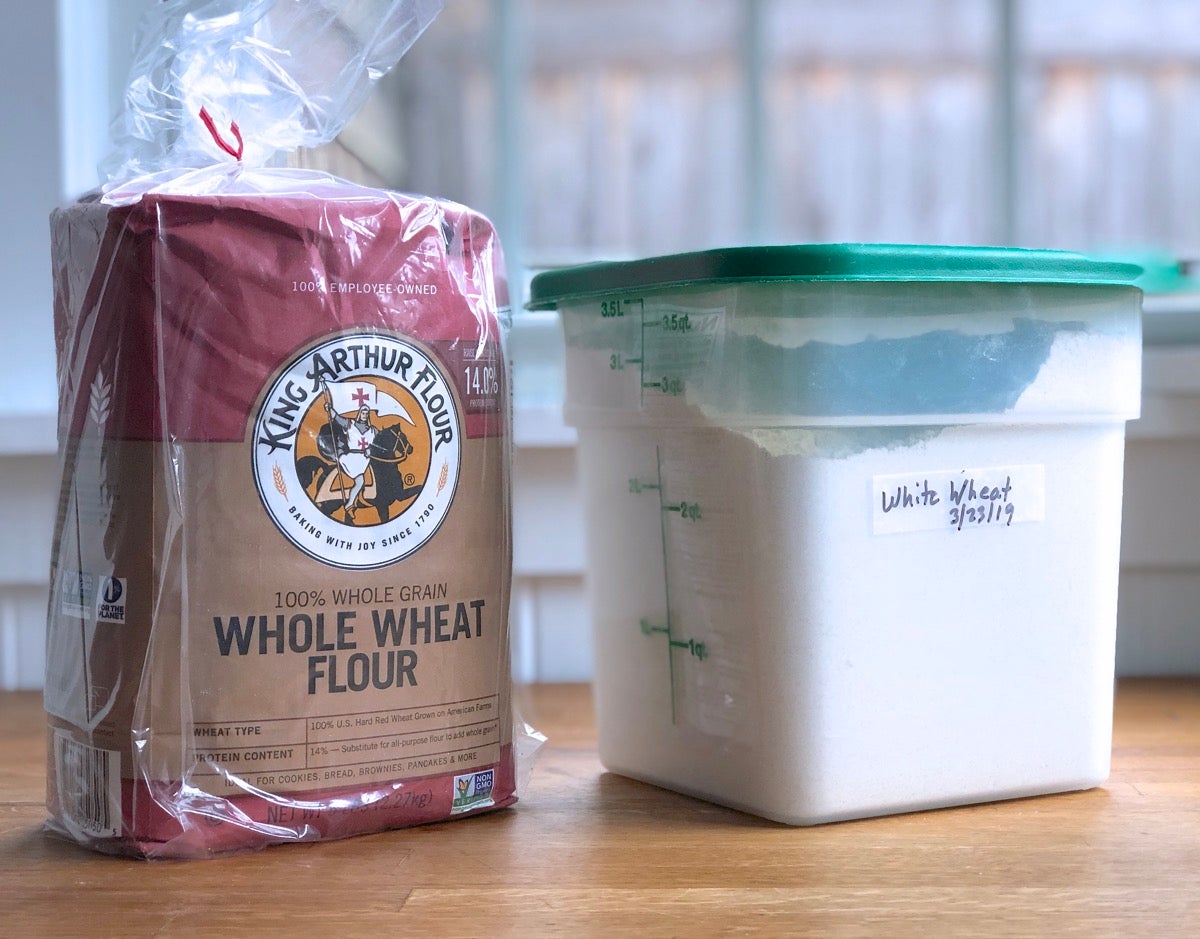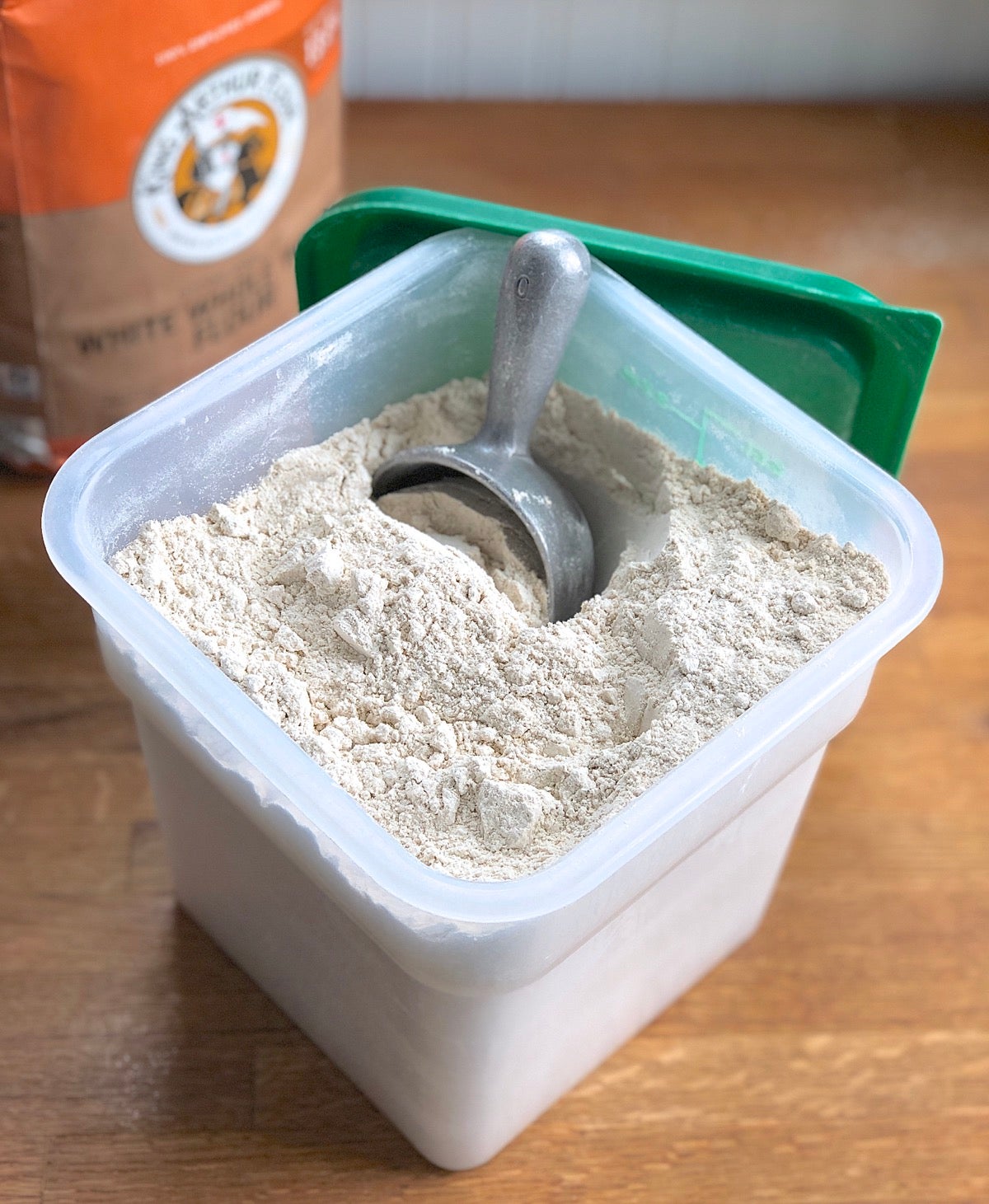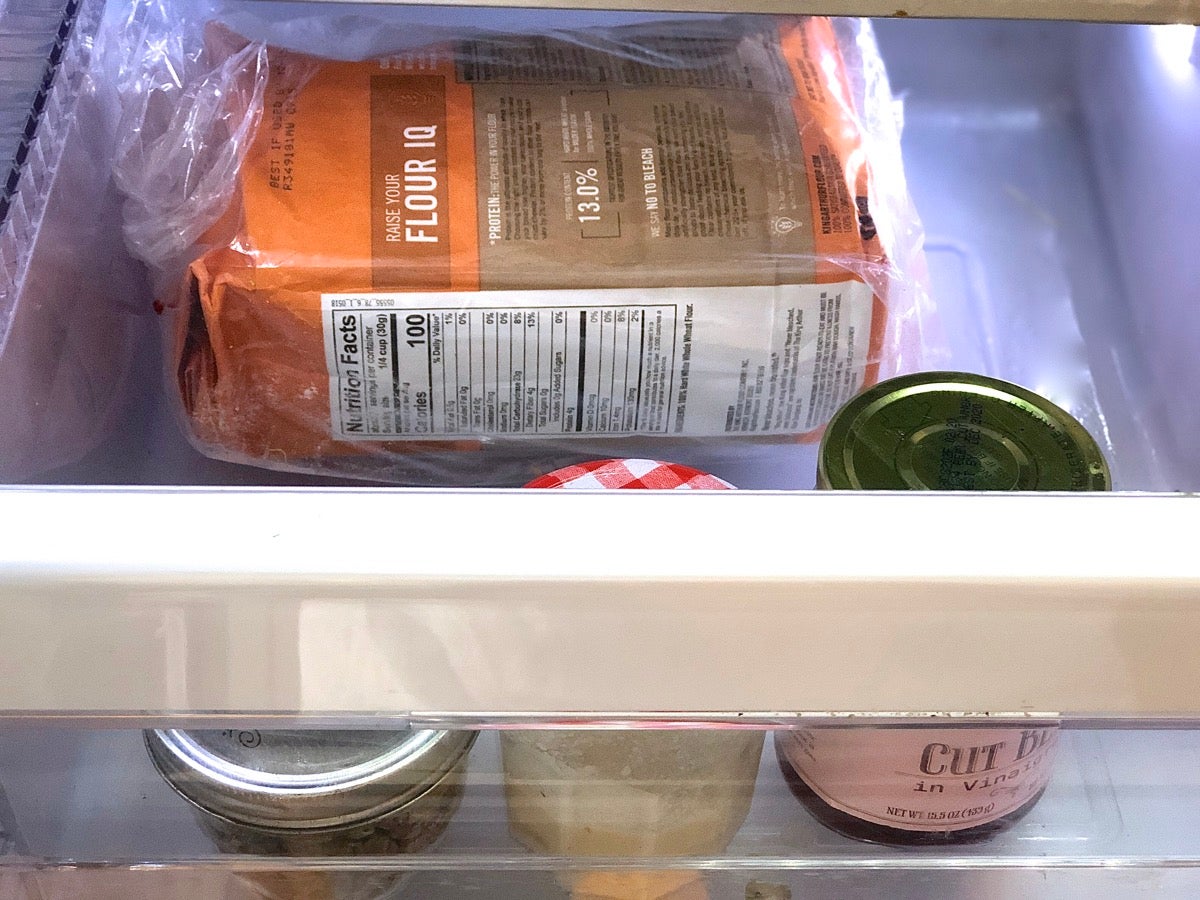


There’s nothing quite so pure and simple as the flavor of freshly milled whole grains. The grains’ mildly earthy nuttiness balances beautifully with their inherent sweetness, their aroma reminiscent of lazing in a green field on a warm summer day.
Unfortunately, the elusive flavor of whole grains begins to fade once the grains are milled. And without special care, whole grain flour can begin to taste insipid at best, and bitter as time goes on. How do you prevent this gradual degradation?
When whole grain berries (seeds) are milled, the oil in their innermost heart (the germ) is exposed to oxygen. The oil starts to oxidize and, like that forgotten bottle of olive oil you discovered at the back of the cupboard, it begins to “go off.” The result? An unpleasant aroma and mildly bitter flavor.
Because there’s actually very little oil in whole wheat flour (the equivalent of about 3/4 teaspoon oil per cup of flour), it takes a while for this oxidation to become apparent. But at some point you’ll decide to bake and open your bag of whole wheat flour. Taking a sniff you think, “Uh-oh...” — and decide to just go with all-purpose flour instead.

Which is a shame. Whole grain flours are not just good for you, they can be quite delicious as well — as any of you who’ve tried our interactive Bake the Bag program have discovered. So what’s the best way to store whole grains in order to preserve their fleeting flavor?
Three words: Airtight, cold, and dark.

Take your just-purchased bag of whole grain flour and place it in a large, sealable plastic bag, or a large snap-top plastic container.

Or empty the flour out of its sack into a plastic bag (preferably a double bag for extra security), or a container with a tight seal: plastic or glass are equally fine. You want that flour as airtight as possible: the less air and moisture, the slower the oxidation process. In addition, storing flour airtight helps prevent it from absorbing any flavors or odors from surrounding foods.
Want to save space? Square containers occupy 25% less space than round ones. Stock up on stackable square containers!

The colder and darker the storage environment, the better whole grain flour will keep. Warmth and light increase the rate of oxidation, so freezer storage is ideal. For best results, place flour as far away from the freezer door as possible, to avoid incidental kitchen light and warmth. Expect a shelf life of up to six months for whole grain flour stored in the freezer.
Note: Shelf life is very dependent on how recently the flour had been milled when you bought it, and how it’s been stored prior to your purchase; thus shelf life at home may vary.
Bonus: Four days in the freezer effectively kills any existing pests and/or their offspring, preventing potential insect issues down the road.

Not all of us have sufficient freezer space for multiple bags or containers of whole grain flour. If this describes your situation, store flour in your fridge. Again, keep it as far to the back as possible (the back of a drawer is ideal), to avoid the heat and light of an open door. While shelf life won’t be quite as long as in the freezer, it’s better than room-temperature storage.
Store flour (in its airtight container) at the back of a cupboard; or in the coolest, darkest place you can find. You can expect a shelf life of one to three months for whole grain flour stored at cool room temperature.
Sure. Older whole grain flour won’t hurt you, but your baked goods run the risk of carrying its unappetizing flavor. Of course, discard any flour that smells obviously rancid, or shows signs of insect activity (webs, black specks, etc.).

“Whole” whole grains — intact berries — have a longer shelf life than whole grain flour. With their germ intact, you can expect whole grains like wheat, spelt, or rye berries, or whole oat “groats” (berries) to stay fresh at room temperature for up to six months. Freeze them airtight, and they should be good for up to a year. An exception is buckwheat berries: buckwheat’s higher oil content shortens its shelf life to about two months on the shelf, four months in the freezer.

And how about steel-cut oats and rolled oats? Steel-cut or crushed oats (Irish or Scottish oats, respectively) are coarsely refined oat groats; the rye equivalent is called rye chops. The germ in these gritty grains has been disturbed, but some parts may remain intact; their shelf life will be in between the whole berry and flour.
Rolled oats (“oatmeal”) are oat groats that have been steamed, then flattened. Steaming stabilizes the oil in their germ and extends their shelf life to something similar to whole oat groats: up to six months at room temperature, or a year in the freezer.
As for wheat bran or oat bran, with neither germ nor oil, bran is very shelf-stable. Still, it won't hurt to store it airtight in a cool, dark place.

Without any germ to oxidize, “white” flour (including all-purpose, bread, and self-rising flour) is much more stable than whole grain flour. If stored in a loose-lidded canister on your kitchen counter white flour will gradually begin to taste and smell a bit stale; but this will happen over the course of months, not weeks. If you’re not rotating your white flours by baking with them regularly (say, once a week or so), store them airtight in the freezer or fridge.
Nut flours (e.g., almond flour) and coconut flour, whose oil content is high in comparison to other flours, are highly susceptible to deterioration at room temperature once their package is opened. They should always be stored in the freezer.
Don’t worry, the flour you yank from the freezer will warm up pretty thoroughly while you’re mixing it up in your recipe. One exception: no-knead breads, which are mixed just briefly prior to rising. Go ahead and use cold flour, but be aware your rising time will probably be a bit longer.

Best way to make sure your whole wheat flour is fresh? Buy it frequently and bake with it often. Check out this collection of recipes designed to help you bake your way through an entire 5-pound bag of white wheat flour in the most delicious way possible!

